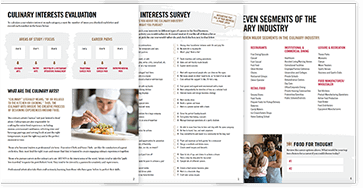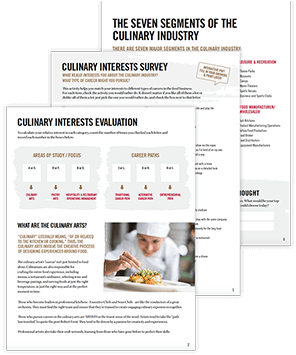 Roux is a thickening agent that has been used in cooking for hundreds of years, commonly to thicken sauces, soups, stews and gravy. Roux is one way that Austin culinary arts students can add color, texture and flavor to their dishes. Rouxs typically fall into a few different categories that are based on the color. The color of the roux depends on the length of time it is cooked. Roux is relatively easy to make, but it takes some practice to get it exactly right.
Roux is a thickening agent that has been used in cooking for hundreds of years, commonly to thicken sauces, soups, stews and gravy. Roux is one way that Austin culinary arts students can add color, texture and flavor to their dishes. Rouxs typically fall into a few different categories that are based on the color. The color of the roux depends on the length of time it is cooked. Roux is relatively easy to make, but it takes some practice to get it exactly right.
The amount of roux you need to make depends on the type of dish you’re cooking. In general, it doesn’t hurt to make too much roux because you can always store it in the fridge and use it later. Roux keeps very well in a sealed, airtight container. You could make it and store it for a week or even up to a month before you use it.
Step 1: Assemble the ingredients
Roux is made by cooking fat with flour. Many chefs prefer to use ghee (clarified butter) as the fat, but you can use bacon grease, lard, regular butter or any other type of fat. Oils will work to create roux, but once the roux cools the oil and flour will begin to separate, therefore, it is better to use some type of fat.
The recommended ratio of fat to flour differs depending on the chef. Some prefer to use more flour than fat, while others use equal parts fat and flour. Whatever you choose, remember that adding more flour to your roux will make the roux a more efficient thickening agent. Finding a balance that works for you, along with knowing how long you want to cook it, is what makes making roux difficult.
Step 2: Melt the fat
Once you have all your ingredients ready, begin melting the fat in a large skillet. Make sure the skillet is not too flat because you’ll be stirring and whisking flour. You want to be able to stir and whisk without losing any of the roux over the side of the pan.
Step 3: Add in the flour
When the fat is fully melted and heated, start sprinkling in flour. No matter how much you plan on using, don’t put it all in at once. Instead, add it a little at a time, whisking all the while it is being added.
Step 4: Cook to the desired color
Once you get all the flour combined with the fat, continue to stir the roux slowly. In three to five minutes the roux will be what is commonly known as white roux. After about 10 to 15 more minutes you will see it begin to darken. As the roux darkens it will get smoother and the smell will become more pronounced.
Step 5: Use it or store it
Once your roux gets to the stage that you want it to, you can either add it to your dish or you can store it in an airtight container in the refrigerator and use it whenever you need it.
The Essential Culinary Career Survey The Essential Culinary Career Survey What's your ideal culinary career: Fine dining? Your own restaurant? Pastry? Get our self-evaluation survey to find out! We’ve compiled a checklist of all of the essential questions into one handy guide: career options, culinary interest surveys, educational opportunities, and more.



